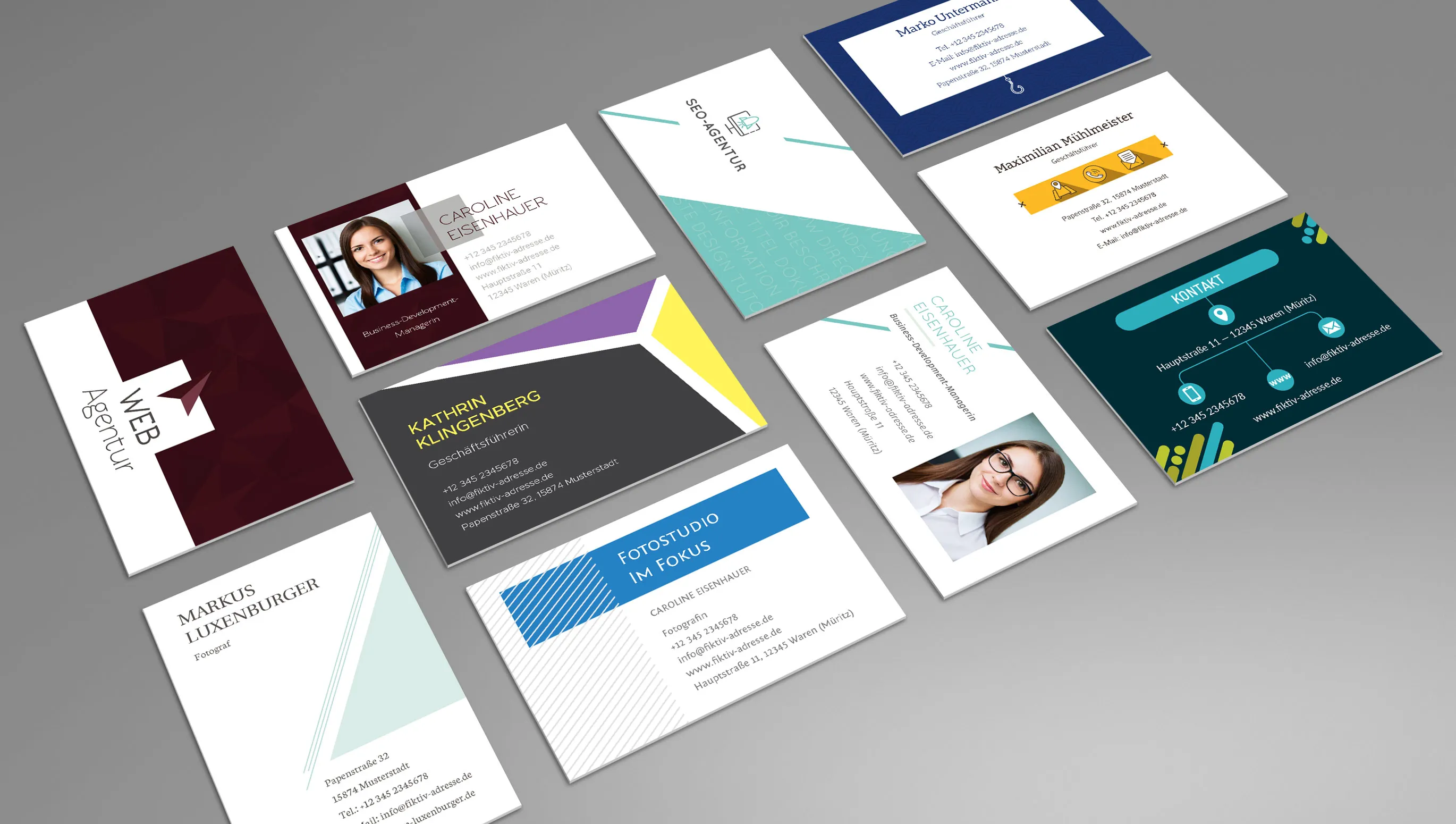Table of contents
Business card as a first impression
The business card still plays an important role in business communication, as one of its main functions is to enable a quick exchange of contact details during a personal meeting. When a customer picks up a business card, their attention should be caught not only by its external appearance, but also by the quality of the materials used. Every design detail and every element of the business card should not only fulfill an information function, but also act as a means of professional positioning.
It is precisely this approach to the design of business cards that makes it possible not only to leave a lasting impression of oneself, but also to demonstrate professionalism, individuality and attention to detail. If the customer perceives the business card as a small work of art, it shows that the owner pays attention to every detail and strives to deliver high quality in his work.

The business card is not only an information carrier, but also reflects the personality and professionalism of the owner and the company they represent. It is the first visual image of you and your company, so the design and quality should match your high standards and working style.
Paying proper attention to the design and quality of your business card will not only help your customer remember you, but also show that you work responsibly and professionally. This gives the impression that you are a person who doesn't overlook small details and pays the utmost attention and respect to your work.
Why is the business card important as a first impression? This is particularly elementary at a time when competition is fierce and you have to fight for every customer in order to be successful. And for haptic reasons, print products are also one of the ways to demonstrate distinctiveness in our digital world.
Business cards and their role in business etiquette
The business card is a traditional attribute of business relationships and continues to play a role in the life of a businessman or woman. Let's get to know its history, its functions, its types, its design rules and how it is handed over.
According to the first historical records, business cards appeared in ancient China between the second and third centuries BC. Chinese officials were obliged by decree to carry red paper cards with their name and function. These business cards are still an example of restraint and aesthetics today: no superfluous or inappropriate details other than name, first name and position.

The first official historical mention of the calling card in European culture dates back to the reign of King Louis XIV. After the calling card appeared in France, it became a highly symbolic attribute of the upper classes and a mandatory accessory. In the form of a playing card with the name of the visitor (hence the name visiting card - from the French "visite" - visit), the visiting card presented its owner at his best.
The first printed visiting card in Germany dates back to 1786 and the use of visiting cards quickly became part of etiquette rules. Later, visiting cards became an attribute of the ladies and gentlemen of the middle class and were only missing in the lower social classes.
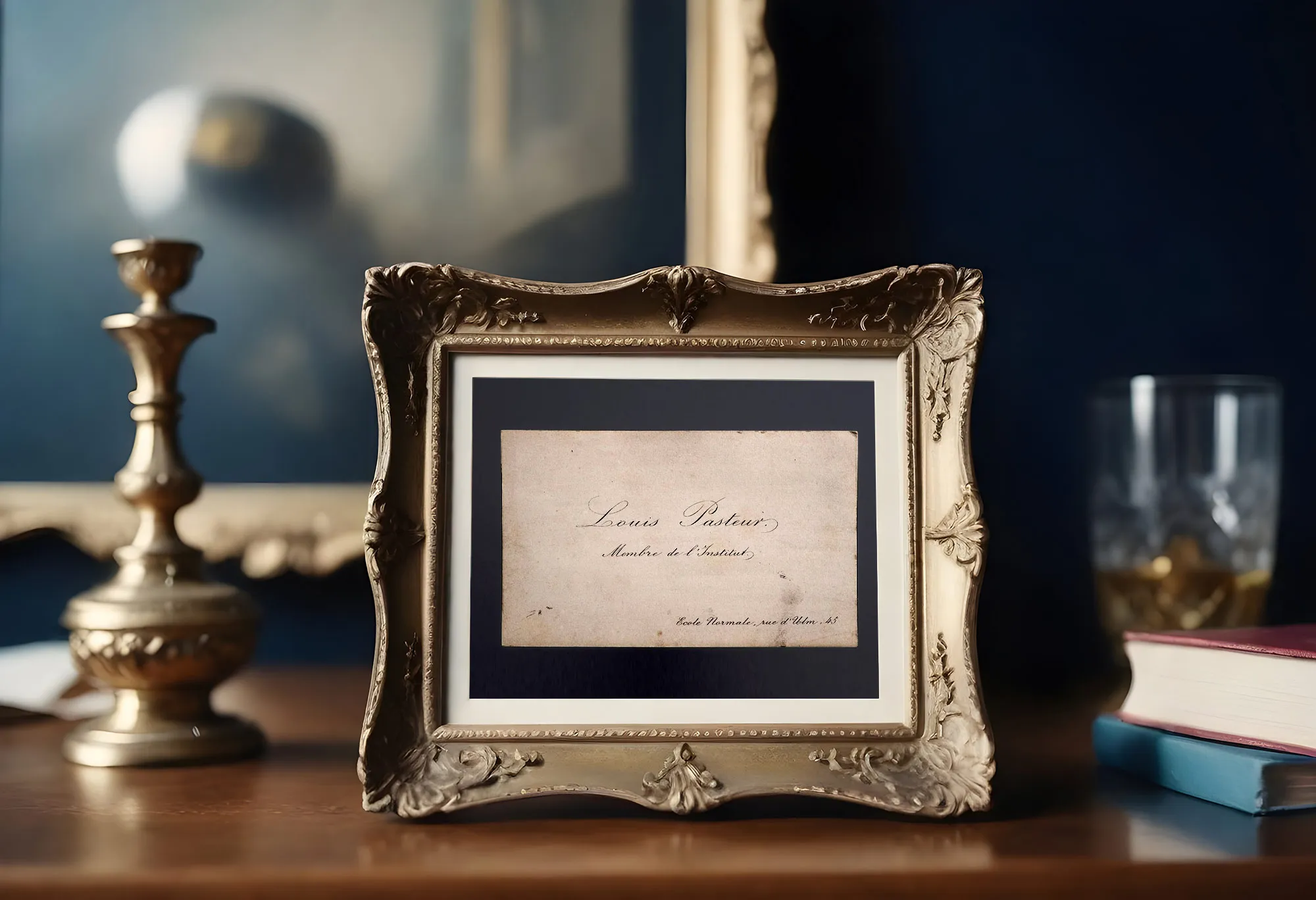
In the 16th and 17th centuries, the citizens of Florence and Venice already had engraved visiting cards (i.e. cards printed with special metal forms, not individually produced). The printing industry was particularly well developed there at this time. The production of visiting cards developed into a special art in which some of the best craftsmen of the time were involved.
In countries with developed market economies (both in the West and in the East), business cards play an important role in modern business life and in most cases replace any document, including the identity card. They are an obligatory attribute of a businessman.
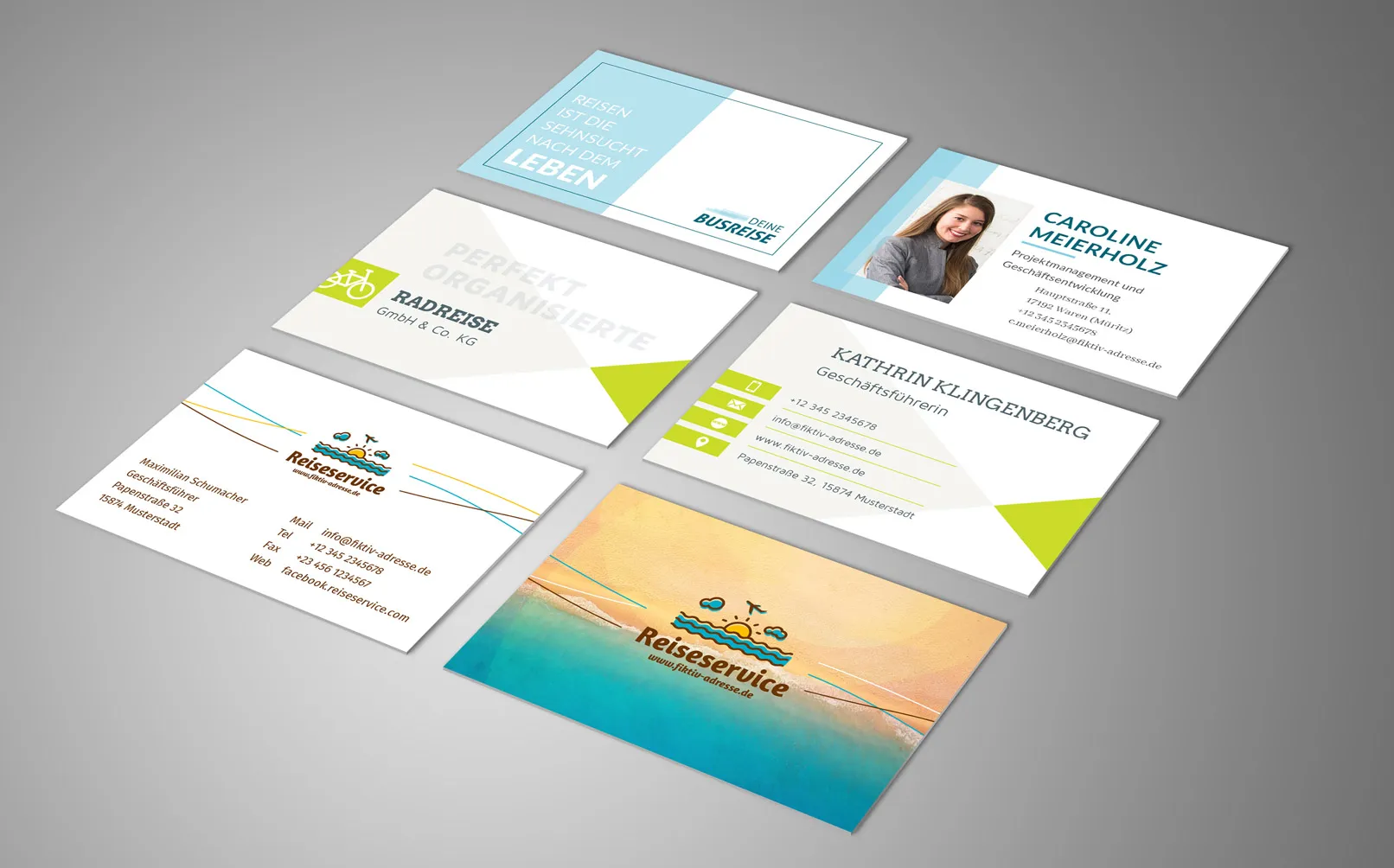
The functions of a modern business card:
- Introduction: business cards serve as an introduction and introduction to the business world. They contain information about the person (name and position) and the company in order to establish contacts and make a first impression.
- Advertising: Business cards can also be used to advertise the company's products or services. They can contain slogans, logos or other promotional information to attract the attention and interest of potential customers.
- Contact information: One of the main functions of business cards is to include contact information such as email address, phone number, company address, location and website. This makes it easier to contact the cardholder.
- Professional image: A high-quality business card helps to convey a professional and trustworthy image of the person or company. This helps to strengthen the trust of customers and business partners.
- Organization: Business cards can help to organize and store important contacts. They help to record information about new acquaintances and business relationships.
- Convenience: Business cards are easy to carry and distribute, making them a practical tool for exchanging contacts at events, meetings or in everyday life.
Business cards are used for both formal and informal communication. The existing business cards can be roughly divided into the following types:
- Personal business card: used for individual communication and exchange of contact information between individuals.
- Corporate business card: Used to introduce a company or organization. Usually contains the logo, company name and contact information of the representative.
- Company business card: Issued to employees of a company and contains their name, position and contact information.
- Family business card: Contains information about family members, their names, addresses and telephone numbers. Usually used to exchange family contacts with friends and relatives.
- Temporary business card: Used for the temporary exchange of contacts at events or conferences. Usually contains brief information about the person and the specific event.
- Electronic business card: Contains digital contact information that can be transmitted via mobile devices or email.

Company business cards
The company business card is a tool for representing a company or organization. It is used to convey basic information about the company and its representatives in a practical and professional format. A company's business card usually contains the following main elements:
- Company logo: a key element of the company business card is the company logo. It helps to recognize and remember the brand, making the business card more recognizable and professional.
- Company name: Usually placed below the logo. The company name should be clear and easy to read so that potential customers can quickly recognize your company.
- Contact information: Includes the company address, phone number, email address and possibly the company website. It is important that this information is up-to-date and easily accessible.
- Representative information: Usually includes the name and position of the company representative. This helps to establish personal contacts and to contact the right person in the company directly.
- Additional design details: Company business cards can also include additional design details, such as color schemes, fonts and styles that match the company's brand and give a professional impression.
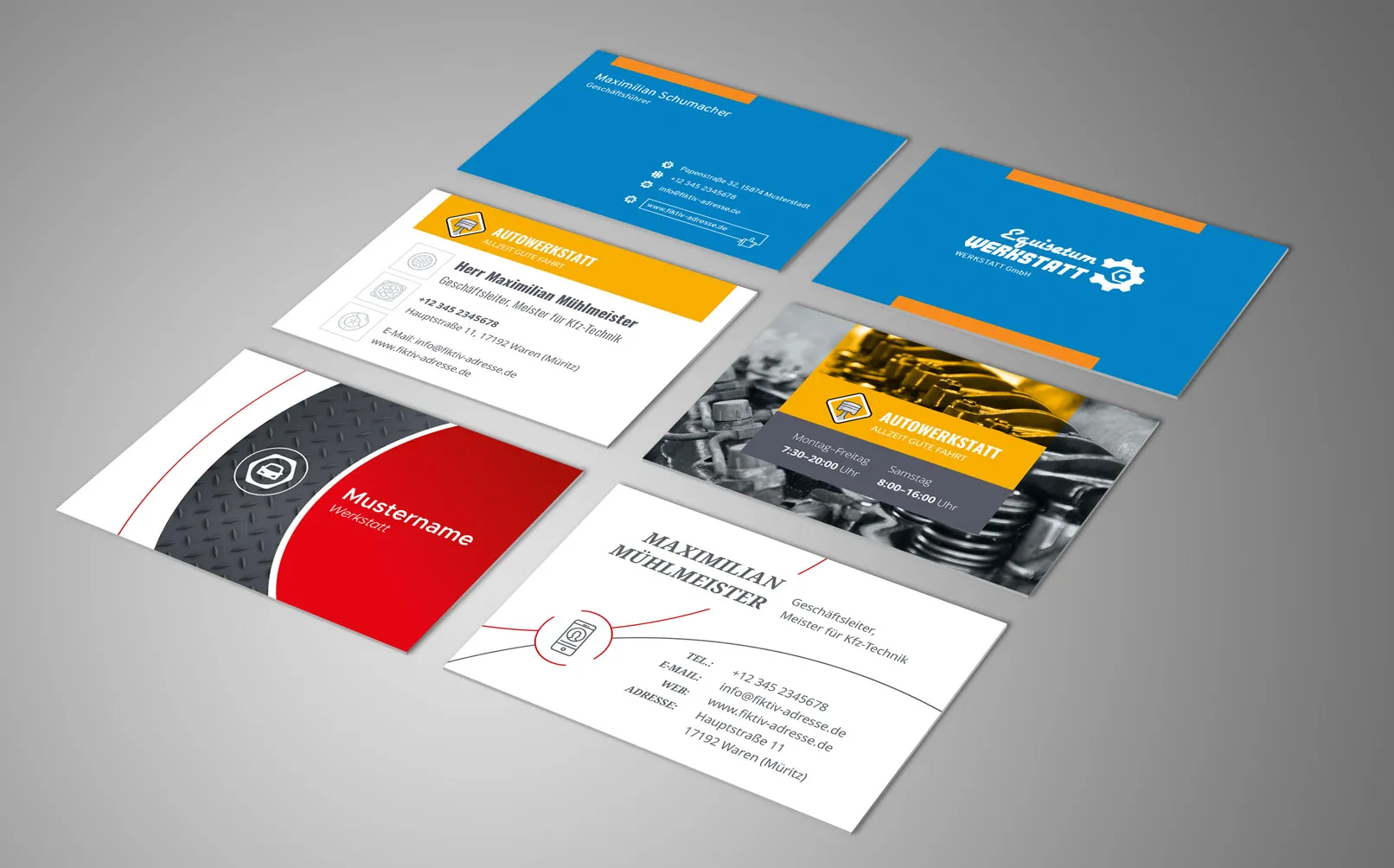
Corporate business cards play an important role in business by establishing business contacts, expanding business opportunities and promoting brand awareness. They are an important part of the company image and help to strengthen the company's reputation with customers and partners.
Personal business cards
The personal business card is a tool for individual communication and the exchange of contact details between people. It is a card that contains basic information about a person, such as name, position, contact details and possibly information about the company or organization.
Here are the main elements of a personal business card:
- First and last name: This is usually the most prominent element on the business card. The person's first and last name is emphasized in large font or in some other way.
- Position: The person's position or job title is indicated. This helps to identify their role or area of activity.
- Contact details: This includes phone number, email address and possibly the address of the company. This information helps other people to contact the owner of the business card.
- Personal details: In some cases, the personal business card may also include personal details such as home address or personal website.
Personal business cards are often used at conferences, seminars, networking events and other occasions where the exchange of contact details is important. They help to make new contacts, expand business opportunities and maintain business relationships.

Business cards
Business card - a card that is issued to employees of a company or organization and contains information about them in the context of their professional activity. It is intended for use in work environments and for exchanging contact details with customers, partners and colleagues.
Here are the main elements of a business card:
- Employee's name and last name: Usually placed at the top of the business card and stated in full or abbreviated form, depending on the employee's preferences and company standards.
- Position: The employee's position or job role in the company is indicated. This helps determine his or her role and responsibilities within the context of business relationships.
- Contact Information: Includes phone number, email address and possibly other contact options such as the company address or a profile on social networks.
- Company logo: Depending on company standards, the company logo or brand logo may be present on the business card to indicate the employee's affiliation with a particular organization.
- Additional information: In some cases, the service business card may include additional information about the company, such as the office address or a link to the website.
Business cards are found in the business environment, helping employees to represent the company and exchange contacts in a professional environment. They can also be used to build and maintain business relationships and interact with customers and partners. The name business card is not really common. Every carrier simply calls them business cards.
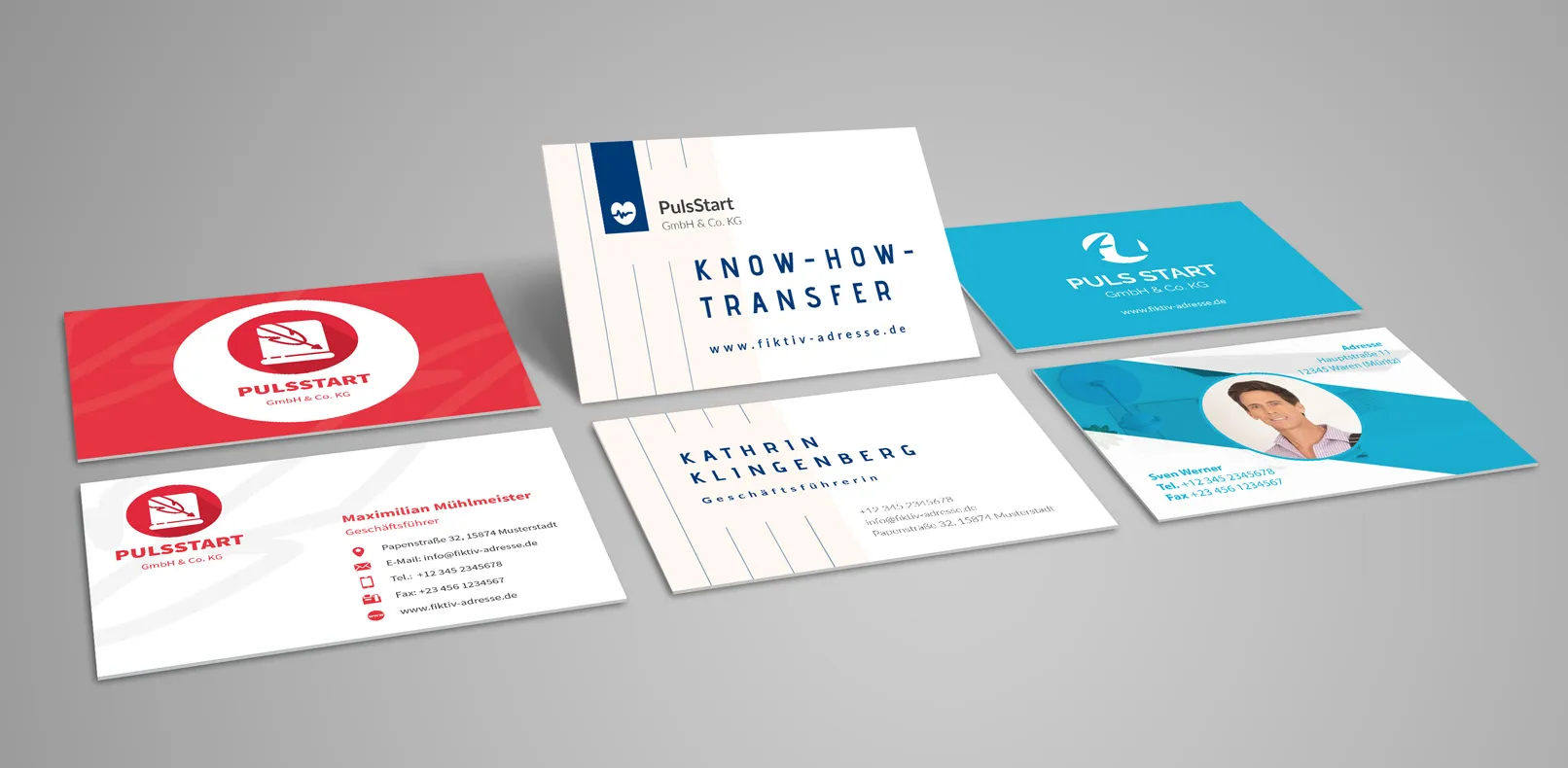
Temporary business cards
A temporary business card is a special type of business card that is used for temporary purposes or events. Unlike permanent business cards, which are often intended for long-term use, temporary business cards are used for short-term occasions such as conferences, seminars, trade fairs or networking events. Here are some important features and functions of temporary business cards:
- Purpose: Temporary business cards are used to quickly and effectively exchange contact information, especially at events where many business contacts are made.
- Simple design: As a rule, temporary business cards have a simple design that contains only basic information to facilitate the exchange of information.
- Short-term use: These business cards are not intended for long-term use and are usually discarded or no longer used after the event.
- Limited information: Temporary business cards usually only contain basic contact information such as name, company name, position, phone number and email address.
- Cost and time savings: By using temporary business cards, companies can save costs and time by not having to print elaborate or expensive business cards for temporary events.
- Flexibility: Temporary business cards offer a degree of flexibility as they can be created quickly and inexpensively and can be easily adapted to different events and occasions.
Overall, temporary business cards are a practical way to share information and make business contacts at short-term events. They allow participants to communicate with each other quickly and efficiently without having to worry about long-term impact or design.

Electronic business cards
The electronic business card (or e-business card) is the digital version of a conventional paper business card. Instead of being in paper form, the e-business card is in electronic form and can be transferred or exchanged via mobile devices, e-mail, messenger or special applications.
Here are the most important features and characteristics of electronic business cards:
- Digital format: electronic business cards are in digital form, usually as electronic files or dedicated mobile apps.
- Contact information: They contain the same contact information as traditional business cards, including name, last name, position, contact numbers, email address, company address and other details.
- Ease of transfer: One of the main advantages of electronic business cards is their ease of transfer and interchangeability. They can be sent quickly via email or messenger, making the process of exchanging contacts more efficient and convenient.
- Environmental aspect: The use of electronic business cards contributes to the reduction of paper consumption and thus to the reduction of negative environmental impact.
- Updating information: Unlike paper business cards, information on electronic business cards can be easily updated and changed, which is especially useful when contact information or location changes.
- Mobility: Electronic business cards are convenient to store in mobile devices such as smartphones and tablets, allowing access to contact information anytime, anywhere.
- Interactivity: Some electronic business cards can be interactive and contain links to websites, social network profiles or other online resources.
Overall, electronic business cards are a modern and practical way to exchange contact information that reflects current technological trends and environmental awareness.
Download business cards in our corporate design templates
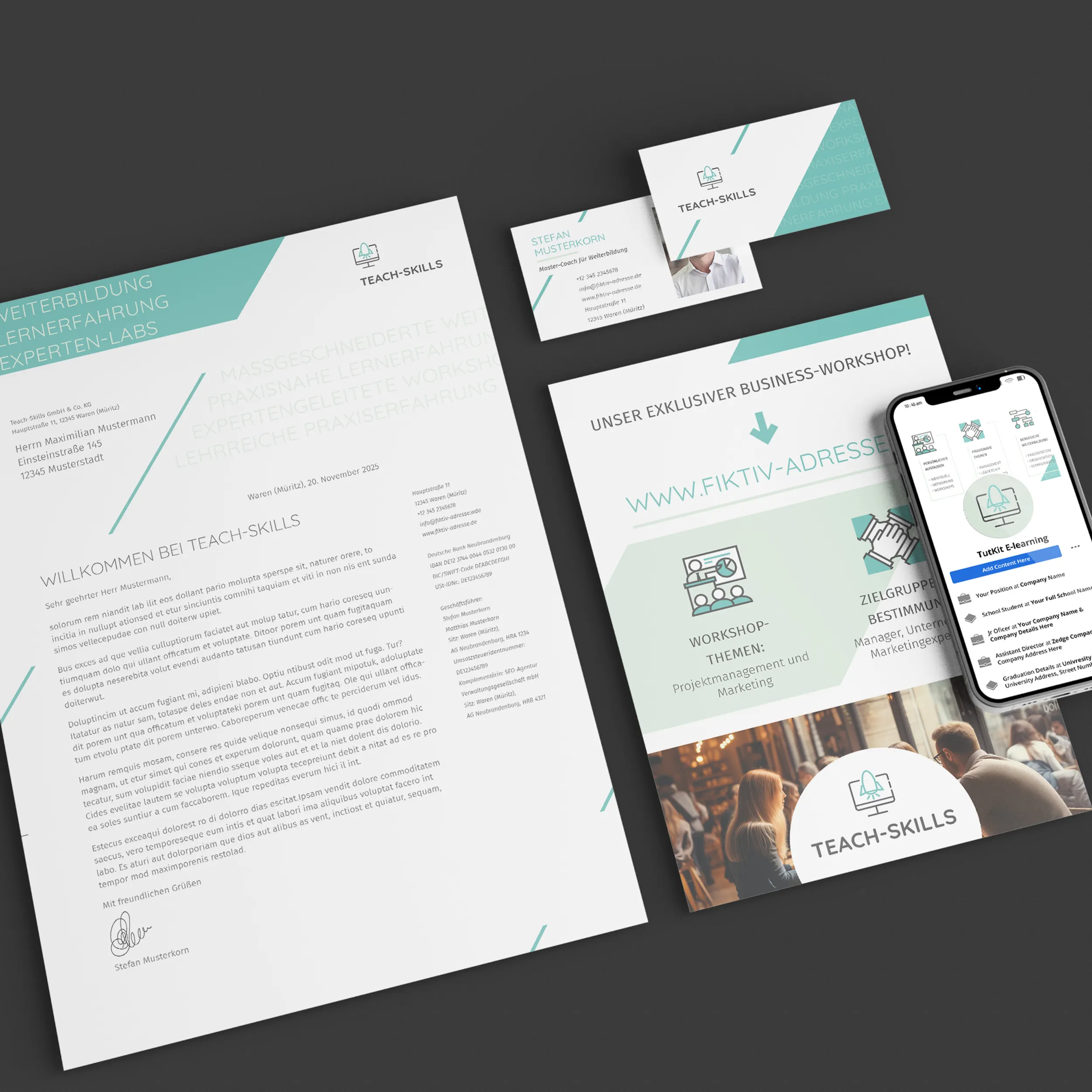
One of the key aspects of a successful business is a consistent and professional image. It is important that business cards, the logo, stationery, brochures, roll-ups and the company's website are designed in the same style to reflect the consistency of the brand and promote recognition among customers and partners.
That's why 4eck Media has developed corporate design templates for all business areas and different industries. Our templates contain all the necessary elements your company might need: from elegant business cards to stylish roll-ups.
Visit the Corporate Design category on our website and download ready-made templates for you to ensure your company always looks professional and consistent.
Classic and modern attributes of business cards
Business cards, which have long been an important part of business communication, have changed considerably over time. Nowadays, they are more than just a carrier of contact details; they have become a reflection of corporate style and a tool to reinforce brand identity. Let's take a look at the most important attributes that can be described as classic and modern.
Classic attributes:
- Name and position: these are basic elements that are always present on a business card. Name and position help to identify the cardholder and understand their role in the company.
- Contact details: These include phone number, email address and possibly the office address. This information makes it possible to get in touch with the cardholder.
- Company logo: A classic attribute that helps to recognize and remember the company's brand. The logo is a key element of the corporate identity.
- Design and texture: Although classic business cards usually have a simple and elegant design, the texture of the paper can add an extra touch of uniqueness and style.
Modern attributes:
- QR codes: QR codes provide additional information about the company or individual, such as their website address or social network profile.
- Links to social networks: Including links to company profiles on social networks makes it possible to make additional contacts and track online activity.
- Interactive elements: Some modern business cards can be interactive and allow forms to be filled out, messages to be sent or additional information to be obtained directly from the card.
- Electronic contacts: In addition to phone numbers and email addresses, business cards can include information on how to reach you via Messenger and other messaging apps.
Modern business cards are more functional and better adapted to today's requirements. However, the classic attributes still form the basis of an effective business card and ensure reliability and a professional appearance.

Classic and modern materials used in business cards
Classic materials:
- Paper: Traditional material for business cards that can have different textures and densities.
- Cardboard: Thick and robust paper used for the production of high-quality business cards.
- Laminate: Transparent or matt film that protects the cards from wear and tear.
Modern materials:
- Plastic: Robust and durable cards with a glossy or matt finish.
- Metal: Luxurious option with engraving or cut-out elements.
- Textile: Unique option with the use of cotton, linen or other textile materials.
- Wood: Environmentally friendly material with an organic look that leaves a lasting impression.
Each of these materials has its own advantages and can be used to create business cards that match a particular style or brand requirements.
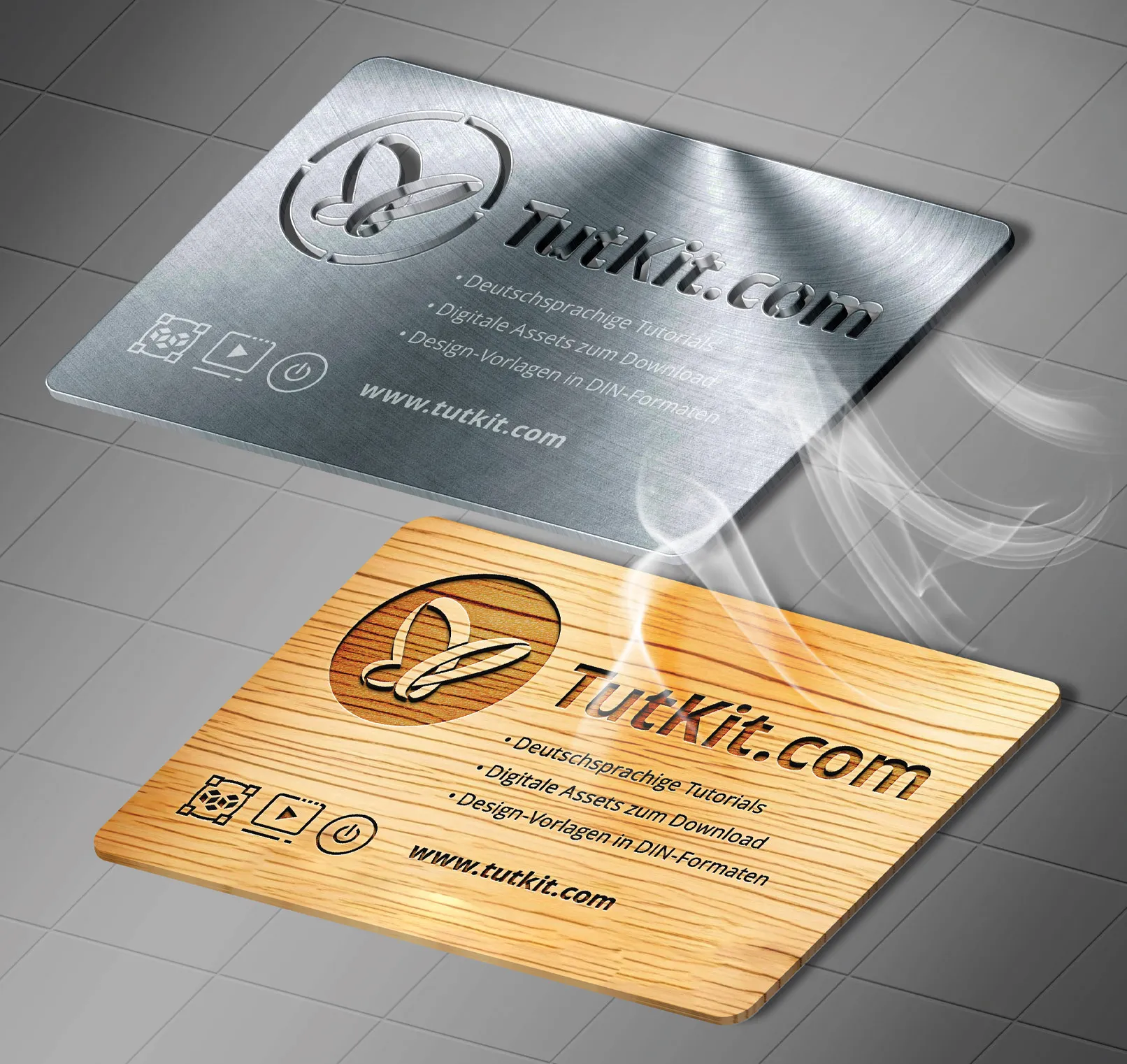
New trend in the production of business cards: multi-layer business cards
Business cards are an essential tool in business life. Not only do they serve as a source of information about a person or a company, but they are also an important marketing tool that shapes first impressions. In today's world, where design and quality have a major impact on perception, it is crucial to present high-quality business cards that convey professionalism and style.
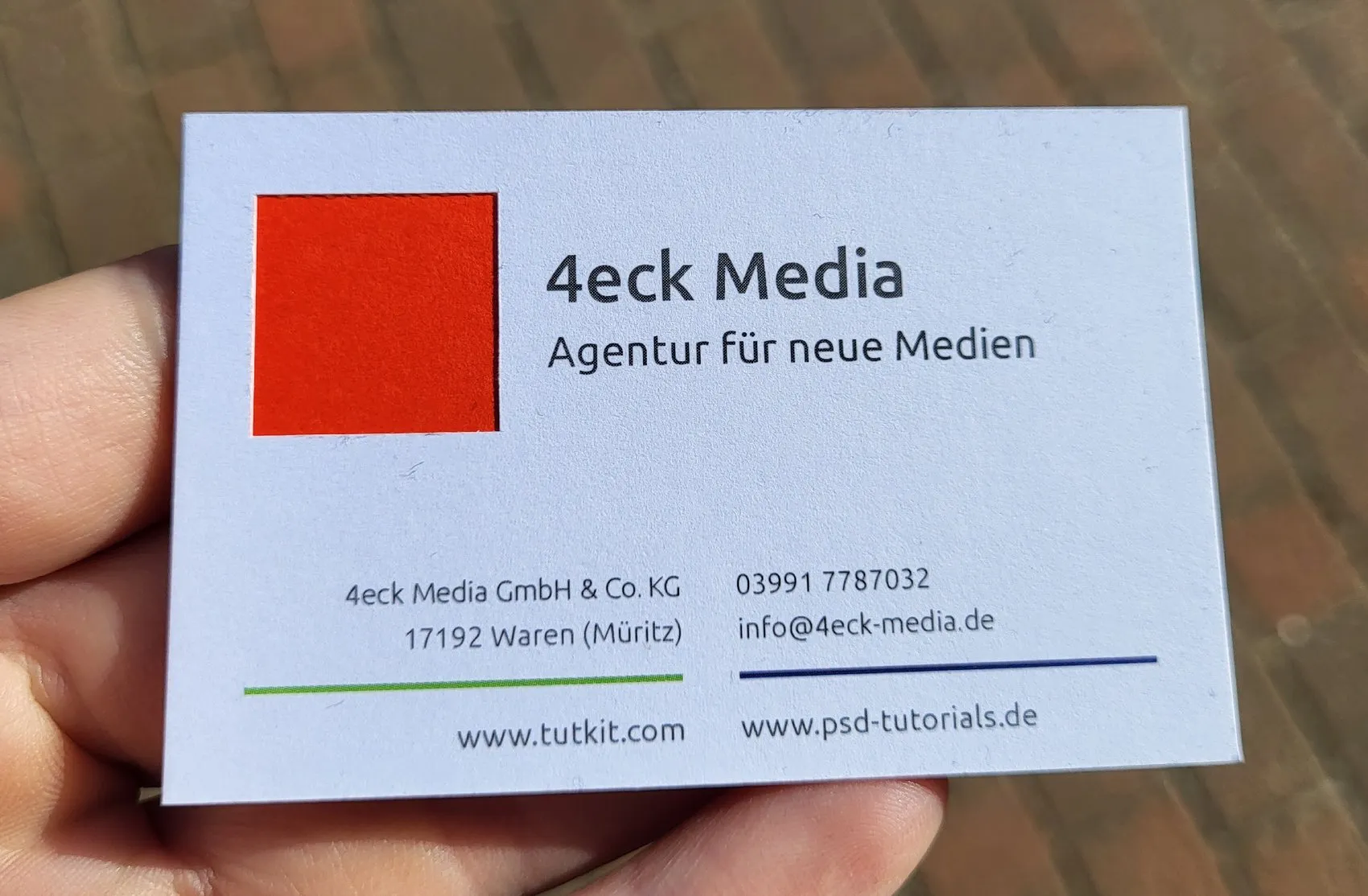
An advanced technology used in the production of high-quality business cards is lamination technology. This technology enables the production of multi-layered business cards that are not only more robust but also more aesthetically pleasing.
What is lamination technology?
Lamination technology refers to the process of laminating or laminating multiple layers of material, usually cardboard or paper, to create a sturdy and attractive surface. In the context of business cards, this process involves applying a thin layer of a high-quality material to the surface of the card to reinforce it and create a smooth finish. It can also be used to create a soft-touch feel.
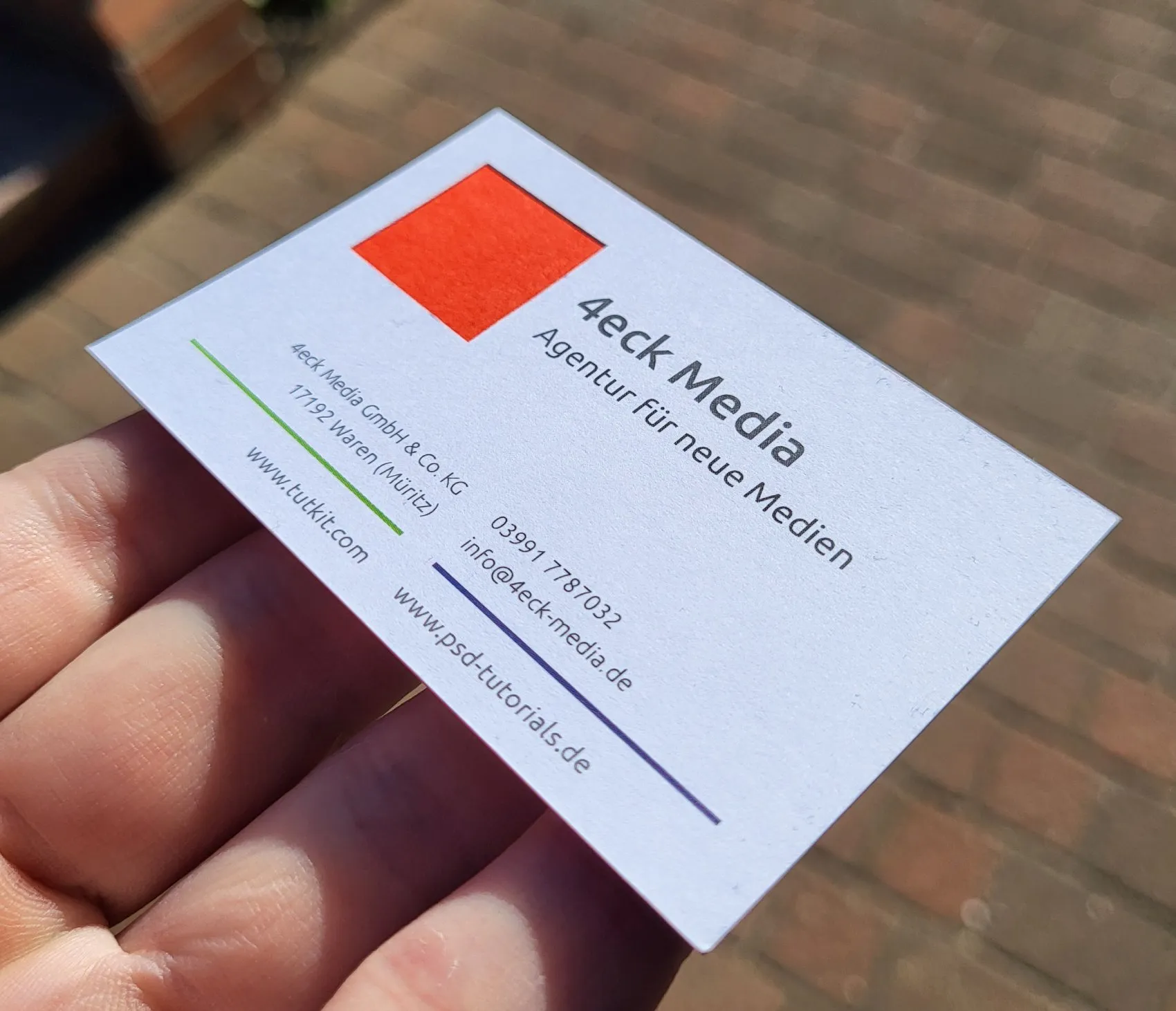
Advantages of lamination technology for business cards:
- Durability: lamination makes business cards more resistant to wear and damage. The extra layer protects the card from scratches, moisture and other external influences, extending its life.
- Aesthetics: The lamination gives business cards a high-quality appearance and a smooth surface that enhances the impression of elegance and professionalism. Colors appear more vibrant and details are sharper, making the card more attractive.
- Various finish options: Different finish options can be realized with the lamination technology, including glossy, matte or semi-gloss. This makes it possible to customize the business cards to the individual style and brand identity.
- Improved print quality: The smooth surface created by lamination results in improved print quality. Text and graphics appear clearer and crisper, improving the readability and visual impact of the business card.
- Eco-friendly: Many manufacturers use eco-friendly materials and processes in lamination technology, helping to minimize environmental impact and promote sustainable business practices.
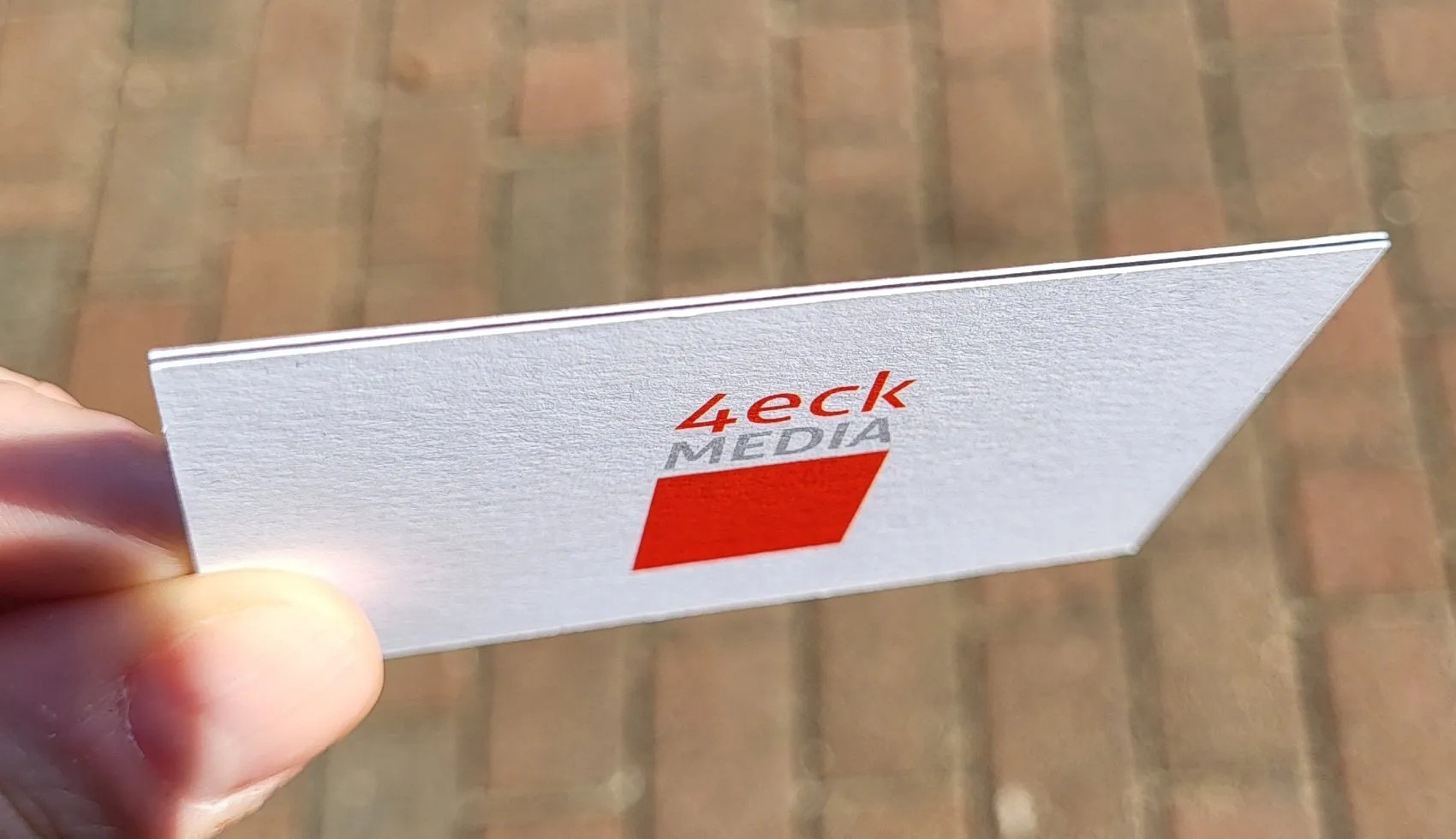
Special features of multi-layer business cards:
- They can be composed of two to four different types of cardboard.
- Combination of different types of cardboard according to color, texture and thickness.
- Possibility of combining different printing methods on one business card.
- Laminating three or four layers gives the business card a colored edge.
Lamination technology has revolutionized the production of business cards by enabling robust, aesthetically pleasing and high-quality products. For entrepreneurs, freelancers or companies that value a professional image, laminated business cards offer an effective way to make a lasting impression while reinforcing brand identity. The future of laminating technology for business cards will still offer many exciting developments and possibilities thanks to constant innovations in printing and material technology.
The color core business cards in particular provide an initial aha effect during the handover. It happens almost every time that my counterpart thinks I've given him too much and then rubs his finger to separate these supposed business cards. And then I reply: "You're already experiencing the first difference to others." And wink with a broad, friendly smile.
How do I create my business card using a template?
There's nothing easier than learning how to edit business card templates with the help of a video. Watch this short video and after downloading the business card template, you'll have no trouble creating your own business card. Dare, you can do it!
Download business card templates from our website
In this article, we have covered the most important aspects of the importance of an attractive business card in business, for whom it is necessary and what types of business cards there are. We've taken a brief look at the history of the business card and discussed the modern materials used to make them, as well as the new trend - multi-layered business cards.
The business card is becoming an indispensable part of your image, which is extremely important in times of fierce competition. We offer to download the business card templates available below this article. For a small fee, you will have the opportunity to purchase business card templates for your company.
